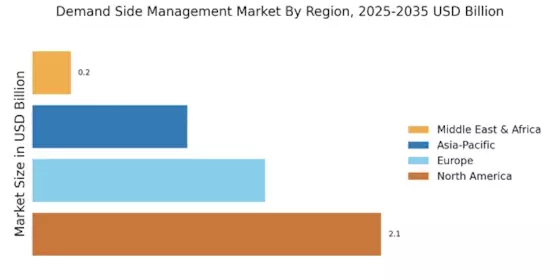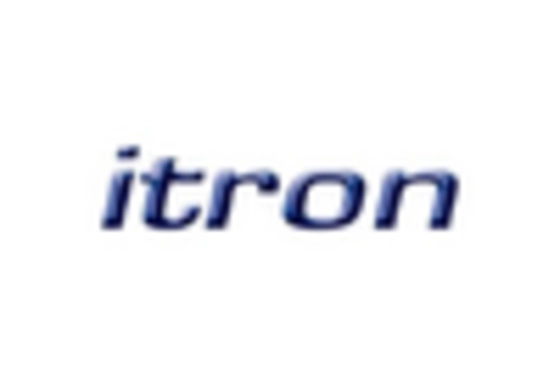Growing Consumer Awareness
Consumer awareness regarding energy consumption and its environmental impact is on the rise, significantly influencing the Demand Side Management Market. As individuals become more informed about their energy usage, they are increasingly seeking ways to reduce their carbon footprint. This shift in consumer behavior is prompting utilities and energy providers to implement demand-side management programs that cater to environmentally conscious consumers. Data suggests that a substantial percentage of consumers are willing to participate in energy-saving initiatives if they are provided with the necessary information and incentives. This growing awareness is likely to drive the Demand Side Management Market forward, as stakeholders adapt their strategies to meet the evolving expectations of consumers.
Technological Advancements
Technological advancements play a pivotal role in shaping the Demand Side Management Market. Innovations such as smart meters, advanced analytics, and Internet of Things (IoT) devices are transforming how energy is consumed and managed. These technologies enable real-time monitoring and control of energy usage, allowing consumers to make informed decisions about their consumption patterns. For instance, the integration of smart grid technologies is expected to enhance the efficiency of energy distribution, thereby optimizing demand response strategies. As these technologies become more accessible, the Demand Side Management Market is likely to witness increased adoption, leading to improved energy management practices and enhanced consumer engagement.
Increased Energy Efficiency
The Demand Side Management Market is experiencing a notable shift towards enhanced energy efficiency. This trend is driven by the rising costs of energy and the growing awareness of environmental sustainability. As consumers and businesses seek to reduce their energy consumption, demand-side management strategies are being adopted more widely. According to recent data, energy efficiency programs have the potential to reduce energy consumption by up to 30% in certain sectors. This not only leads to cost savings for consumers but also contributes to a decrease in greenhouse gas emissions. Consequently, the emphasis on energy efficiency is likely to propel the growth of the Demand Side Management Market, as stakeholders recognize the financial and environmental benefits associated with these initiatives.
Regulatory Support and Incentives
The Demand Side Management Market is benefiting from supportive regulatory frameworks and incentives aimed at promoting energy efficiency and demand response programs. Governments are increasingly recognizing the importance of demand-side management in achieving energy sustainability goals. As a result, various policies and financial incentives are being introduced to encourage both consumers and businesses to participate in energy-saving initiatives. For example, tax credits and rebates for energy-efficient appliances are becoming more common, which can stimulate market growth. This regulatory support is likely to enhance the attractiveness of the Demand Side Management Market, as it provides a conducive environment for the implementation of innovative energy management solutions.
Integration of Renewable Energy Sources
The integration of renewable energy sources into the energy mix is a significant driver for the Demand Side Management Market. As the share of renewables in the energy supply continues to grow, there is an increasing need for effective demand-side management strategies to balance supply and demand. This integration not only helps in stabilizing the grid but also encourages consumers to shift their energy usage to align with periods of high renewable generation. Data indicates that demand response programs can effectively manage peak loads and enhance the reliability of renewable energy sources. Consequently, the emphasis on integrating renewables is likely to propel the Demand Side Management Market, as stakeholders seek to optimize energy consumption in a more sustainable manner.


















Leave a Comment